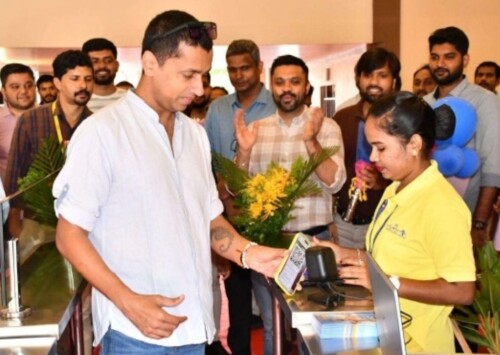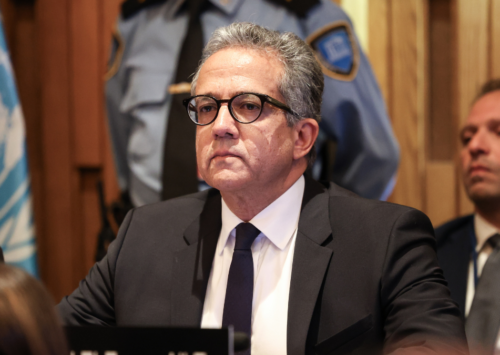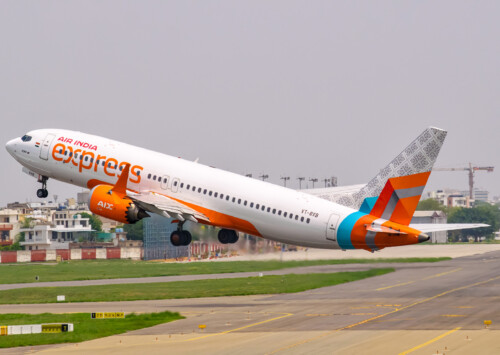India–Russia Old Allies, New Realities

The Indo-Russian defence partnership remains robust, characterised by continued joint projects and regular military exercises
The defence relationship between India and Russia has long stood as the bedrock of India’s strategic partnerships. Built over several decades, this alliance goes beyond just buying and selling weapons. It includes working together on developing new technology, sharing expertise and boosting indigenous production in India. As India aims to become more self-reliant in defence manufacturing, Russia will continue to play a pivotal role.

The Indo-Russian defence partnership remains robust, characterised by continued joint projects and regular military exercises
Anyone looking for a stellar example of the robust defence partnership that India shares with its long-standing partner, Russia, need not look further than the recently mounted Operation Sindoor.
Operation Sindoor was the codename given to the recent attack by India on Pakistan following the massacre of 26 tourists by terrorists at Pahalgam in Jammu and Kashmir.
Spearheading the Indian attack were several weapons systems that were born of India’s decades-long partnership with Russia. These include Sukhoi Su-30 MKI multi-role combat jet, as well as S-400 surface to air missiles, which are considered one of the most potent anti-aircraft ground defences in the world. India also successfully used BrahMos missiles, underscoring the effectiveness of these systems in realworld combat scenarios.

Key areas of cooperation include the joint development of the BrahMos supersonic cruise missile and licenced production of Su-30MKI aircraft
India and Russia share a longstanding and multifaceted defence partnership, rooted in historical ties dating back to the Soviet era. Their bilateral relationship has never really been solely a buyer-seller one as for several decades Russia has played a key role in helping India develop its indigenous defence manufacturing capabilities, providing assistance with joint research, co-development of products, licenced production and technology transfer.

Sriparna Pathak
“Defence and historical ties remain the cornerstone of the time tested relationship between India and Russia. Despite fears that Russia has a no-limits partnership with China, which is an adversary for India, recent cases showed as to how Russia continues to support India. When Pakistani terrorists killed tourists in Pahalgam, Russia was one of the first countries to condemn the terrorism,” Sriparna Pathak, Professor of China Studies, and Senior Fellow at Jindal India Institute, tells Biz@India.
“Despite constantly changing geopolitical realities, the India-Russia friendship continues to hold strong. Russia’s consistent supplies of affordable, condition-free weaponry and its non-interference in India’s internal affairs, contrast with several Western partners’ conditionalities, which also adds to the trust in Russia as a partner,” she adds.
This collaboration is institutionalised through the India-Russia Inter-Governmental Commission on Military Technical Cooperation (IRIGC-MTC), established in 2000, and the 2+2 Dialogue initiated in 2021, which involves annual meetings between the Defence and Foreign Ministers of both nations.
Key areas of cooperation include the joint development of the BrahMos supersonic cruise missile, licenced production of Su-30MKI aircraft, T-90 tanks and AK-203 rifles, as well as the supply of MiG-29K aircraft and Kamov-31 helicopters. These initiatives align with India’s policy of self-reliance, aiming to bolster indigenous defence manufacturing capabilities.
“India relies on Russia for T-72, T-90 tanks, Su-30 MKI and MiG-29 fighter jets, and Akula class submarines. The BrahMos supersonic cruise missile, a joint India-Russia venture is a flagship project, which has equipped Indian Su-30 MKI jets and the BrahMos missiles have been exported to Philippines and there are impending potential sales to Indonesia and Vietnam. There has also been joint research, development and production of AK-203 rifles under the Make in India programme and there are plans for manufacturing facilities for Russian origin equipment such as S-400 systems and T-90 tanks to addresssupply chain issues. There also are regular joint military exercises,’’ says Pathak.
The Indo-Russian defence partnership remains robust, characterised by continued joint projects and regular military exercises encompassing all three armed forces.
However, it is key to note that India has also been trying to diversify its arms imports. Russia accounted for 36 pc of India’s arms imports between 2019 and 2023, which was a significant reduction from 76 pc in 2009-2013.
India’s defence imports from the United States, France and Israel grew to 55 pc of its total imports, between 2019-2023, with acquisitions such as Rafale jets, Apache helicopters and Heron drones, the strategic importance of Russia remains, as Russian systems remain cost-effective and conditionality-free.
“While India is diversifying its arms imports, the reliance on Russian weaponry, which has displayed its merit recently, is going to continue,” says Pathak.
Indo-Russian Rifles Private Limited (IRRPL) is another joint venture between India and Russia, established in 2019 to bolster defence cooperation through the indigenous production of the AK-203 assault rifle.
Situated in Amethi, Uttar Pradesh, IRRPL represents a strategic collaboration between India’s Advanced Weapons and Equipment India Limited (AWEIL) and Munitions India Limited (MIL), and Russia’s Kalashnikov Concern and Rosoboronexport.
The joint venture leverages Russian technological expertise and India’s manufacturing capacity, with the goal of producing over 600,000 rifles. The first batch of 35,000 AK-203 rifles was delivered to the Indian Ministry of Defence in 2024.

Major General SK Sharma
“Our current production capacity stands at 70,000 rifles per year. At present, we manufacture these rifles with 50 pc indigenous content and we are actively progressing towards achieving 100 pc indigenisation by the end of 2025. The complete Transfer of Technology (ToT) from Russia has been fully received and successfully absorbed into our production processes. Starting from April 2026, IRRPL aims to scale up to a steady annual production capacity of 1,20,000 AK-203 rifles. These rifles will be 100 pc ‘Made in India’, marking the culmination of our indigenisation efforts and reflecting our commitment to self-reliance in defense manufacturing,” Major General SK Sharma, CEO and MD, Indo-Russian Rifles Private Limited tells Biz@India.
“Over the past year, IRRPL has fired more than 300,000 rounds as part of its rigorous quality assurance protocols, including four life-cycle tests, each involving 15,000 rounds per rifle. These tests yielded outstanding results, with zero stoppages reported, reaffirming the exceptional reliability and durability of the AK-203 under extreme conditions. In addition to deployment by the Indian Army, the AK-203 has undergone extensive field trials by multiple security forces, earning high praise for its performance in diverse and challenging environments. Building on this strong user feedback, IRRPL is now expanding into next-generation weapon systems, including the AK-19, PPK-20 and a full suite of advanced accessories such as optical sights, under-barrel grenade launchers (UBGLs) and more,” he adds.
Future prospects and strategic initiatives
Going further, Russia has offered to collaborate with India on the development of a new light tank, based on existing Russian models, integrating components and ammunition already manufactured in India to reduce costs and improve efficiency.
Russia has also proposed the domestic production of its advanced Su-57 stealth fighter jets in India, including full technology transfer. This initiative aims to bolster the Indian Air Force’s capabilities.









